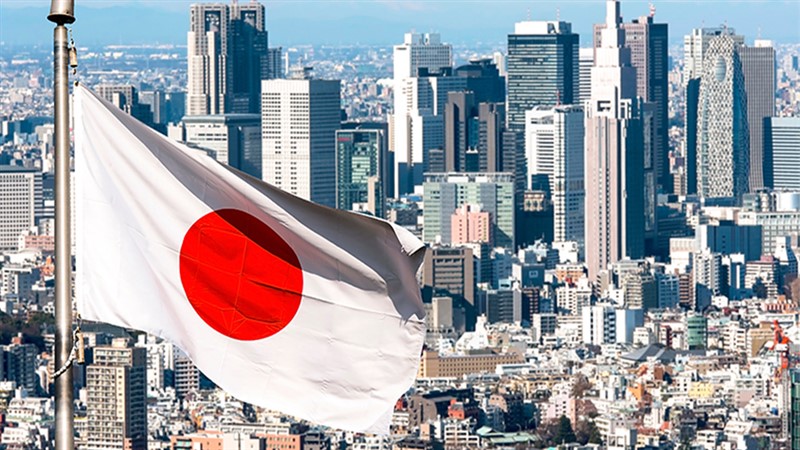2023.03 The Taiwan Banker NO.159 / By David Stinson
Japan's military buildup is backed by questionable financesBanker's Digest
Last year – the same year that he was assassinated – two of former Japanese Prime Minister Shinzo Abe’s signature wishes were granted, marking a new phase of Japan’s post-war history. In December, Japan announced plans to double its military spending, from 1% of GDP to 2% over the five years to 2027. Unfortunately, the timing was awkward. That same month, Japan recorded 4% core inflation – a 41-year high. Inflation was a central aim of “Abenomics,” but a careful reading of events since last year suggests that rather than the warm economy for which central bank has hoped for several decades, this may instead represent a loss of control over the country’s finances.The Japan short is known as the classic “widow-maker trade.” Speculative attacks have been foiled for decades, so any debt crisis predictions must be carefully qualified. What can be said at present is that the central bank policies of the past few months may be counterproductive in the long run, and will likely have to eventually be undone. It has long been assumed that some of the political problems from Japan’s demographic shortfall would be resolved through the creation of paper wealth, but military readiness requires resources from the real economy. U-turnFrom the world wars all the way through the Cold War, Japan’s historical path has paralleled that of Germany. Both countries made defense commitments of 2% of GDP last year. Whereas the sincerity of Germany’s position has subsequently been questioned, however, Japan appears to harbor few doubts on the security merits of its new stance. Its weakness is its financial situation, which could become an increasingly hard constraint over the medium term, and is already arguably already shaping its force posture. Questions of “fiscal dominance” in Japan – when the central bank loses its independence to unserviceable government debt – started to emerge in mid-2022, as the Bank of Japan diverged from the rate policies of the US Fed and other global central banks. The yen collapsed as a result, from 115 to the US dollar in March, to almost 150 in October. On December 20, the Bank of Japan made a surprise modification to its yield control policy, announcing that 10-year government bonds would be allowed to move 0.5% from their 0% target, rather than 0.25%. Some interpreted the move as the beginning of a rate hike cycle, and the yen quickly settled back around 130. In fact, the yen (along with other Asian currencies) had already started its recovery in November based on new expectations of a milder rate hike cycle in the US. At the same time, the episode may have unwittingly revealed the extent to which the central bank was tied to the yield curve.Going back to 2020, the central bank had supported the economy with emergency measures in response to the pandemic, and its balance sheet grew rapidly from 105% of GDP to a peak of 133% (Fig. 1). In April last year, it started winding down its position by 7% of GDP to 125% in October. Since then, however, it has recovered almost all of that amount, bringing it back up to 132% as of January. The economy appears unable to absorb these assets, at least in the view of the central bank.Fig. 1. Bank of Japan assets as a percentage of GDPSupply-side vulnerabilityThe government is worried as well. On January 23, Finance Minister Shunichi Suzuki noted in a speech to Parliament that “we face a fiscal situation that is increasing in severity at an unprecedented level.” “Public finance is the foundation of national trust,” he said. “It is essential that we ensure we have the fiscal space to prevent Japan's credibility and the livelihoods of its people from being undermined in times of emergency.”Fitch Ratings echoed those remarks in a January commentary, noting that “the possibility of further monetary policy adjustments in Japan has increased, posing risks to Japan’s public debt trajectory.” It views the current inflation as temporary. “Our base case does not assume monetary policy tightening – such as through further adjustment of the BOJ’s yield curve control policy, policy rates, or quantitative or qualitative easing. However, risks to this assumption have risen.” While any acute crisis remains far off, this outlook highlights Japan’s susceptibility to external factors like energy prices, which drove a substantial trade deficit last year. Regarding the military expansion, effective deterrence requires long-term resilience to a variety of conditions.Funding for the new spending target has not yet been determined. Prime Minister Kishida Fumio proposed a defense tax, which quickly attracted opposition even from within his own LDP. Japan has been aware of its fiscal problems for many years, but its 2019 sales tax increase from 8% to 10%, following many years of delay, caused a substantial contraction in GDP and left little popular appetite for further hikes. An army without soldiersThe path ahead for Japan is as narrow as it is unfamiliar for a country that hasn’t seen a hot economy in decades. The market will carefully watch the upcoming annual shunto spring union wage negotiations. A broad increase in wages would ensure that the inflation that exists is of the good kind, contributing to economic growth. Assuming this process is not only successful – which is by no means certain – but also sustainable, the government may then have the political capital to turn around and raise taxes, thereby unfortunately canceling out some of these gains. In the meantime, the central bank will not match the rate hikes of other central banks, but must at least partially react to any sustained divergence in order to prevent further currency movements.This multi-step sequence will test Japan’s seriousness as a geopolitical player. If successfully executed, funds would eventually be transferred from corporate balance sheets (whose surplus has long been decried) to the government. At the same time, however, salary increases in the broader market would also increase costs for a military expansion.In a cool economy, “military Keynesianism” might have a stimulatory effect, helping monetize idle labor. Japan’s unemployment rate is however now quite healthy, at 2.50%, so no ancillary benefits will be realized. Military spending must be considered a pure cost.This competition for human resources with the private sector is also manifesting in Japan’s military posture. The Self Defense Forces have suffered from persistent recruiting shortfalls in recent years, and the new plan contains no measures to increase their size, which has led to criticism from a military perspective. Kishida’s military plan “is just a paper plan and that should be corrected,” said Yoji Koda, a retired navy admiral, quoted in Reuters shortly after its release. “Manpower is the real issue for Japan to defend against China and North Korea.” A 10-year bridgeOut of necessity, domestic capital spending, as well as imports from the US and other partners, will substitute to some extent for labor – as they would in the private economy. In the long run, these investments could even result in technological spillovers as new technologies like drones become commonplace. Without a doubt, however, labor scarcity is affecting military planning.Japan is not currently facing a monetary, fiscal, or military crisis, but its demographic situation is affecting everything, whether directly or indirectly. What is concerning is that these problems require dedicated solutions that do not yet appear to exist.The silver lining in all of this is that China will eventually encounter similar tough questions about funding priorities, and probably sooner than it expects. Its demographic situation is more severe than Japan’s, even though the latter occurred earlier. Without allies, China also lacks external military production resources on which to spend its extensive foreign reserves. The challenge for Japan will therefore be to bridge a gap lasting perhaps a decade. A net 1% of the world’s third-largest GDP is a large sum of money, enough to move financial markets if provided on credit, so structural reforms of some type will be necessary.


